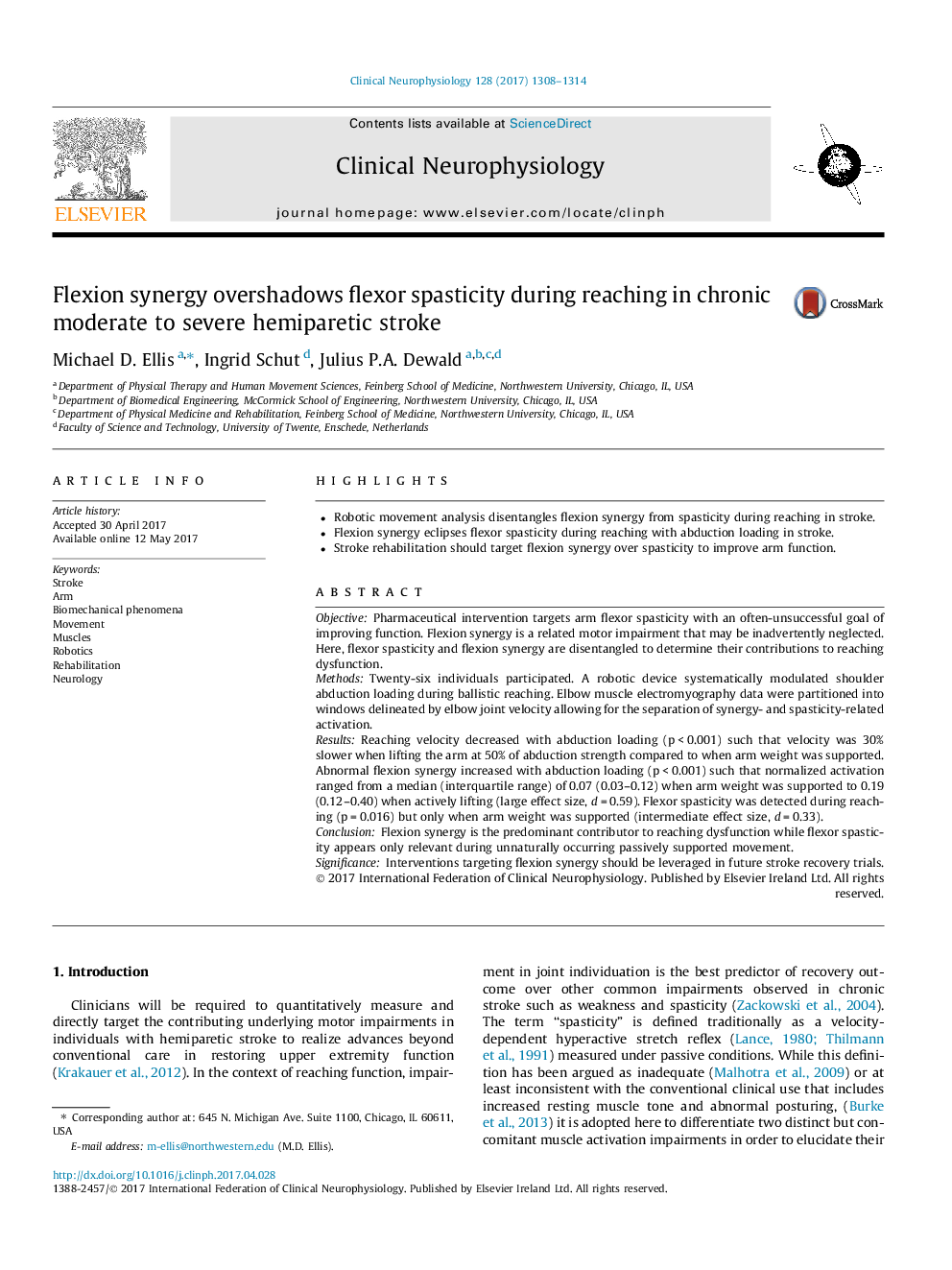| Article ID | Journal | Published Year | Pages | File Type |
|---|---|---|---|---|
| 5627845 | Clinical Neurophysiology | 2017 | 7 Pages |
â¢Robotic movement analysis disentangles flexion synergy from spasticity during reaching in stroke.â¢Flexion synergy eclipses flexor spasticity during reaching with abduction loading in stroke.â¢Stroke rehabilitation should target flexion synergy over spasticity to improve arm function.
ObjectivePharmaceutical intervention targets arm flexor spasticity with an often-unsuccessful goal of improving function. Flexion synergy is a related motor impairment that may be inadvertently neglected. Here, flexor spasticity and flexion synergy are disentangled to determine their contributions to reaching dysfunction.MethodsTwenty-six individuals participated. A robotic device systematically modulated shoulder abduction loading during ballistic reaching. Elbow muscle electromyography data were partitioned into windows delineated by elbow joint velocity allowing for the separation of synergy- and spasticity-related activation.ResultsReaching velocity decreased with abduction loading (p < 0.001) such that velocity was 30% slower when lifting the arm at 50% of abduction strength compared to when arm weight was supported. Abnormal flexion synergy increased with abduction loading (p < 0.001) such that normalized activation ranged from a median (interquartile range) of 0.07 (0.03-0.12) when arm weight was supported to 0.19 (0.12-0.40) when actively lifting (large effect size, d = 0.59). Flexor spasticity was detected during reaching (p = 0.016) but only when arm weight was supported (intermediate effect size, d = 0.33).ConclusionFlexion synergy is the predominant contributor to reaching dysfunction while flexor spasticity appears only relevant during unnaturally occurring passively supported movement.SignificanceInterventions targeting flexion synergy should be leveraged in future stroke recovery trials.
